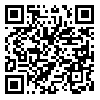Volume 30, Issue 190 (11-2020)
J Mazandaran Univ Med Sci 2020, 30(190): 76-85 |
Back to browse issues page
Download citation:
BibTeX | RIS | EndNote | Medlars | ProCite | Reference Manager | RefWorks
Send citation to:



BibTeX | RIS | EndNote | Medlars | ProCite | Reference Manager | RefWorks
Send citation to:
Zare A, Keshavarzi S, Amiri E, Salehian M, Ahmadian L, Charkhi P et al . Antibiotic Resistance Pattern of Bacteria Isolated from Automated Teller Machines in Sari, Iran. J Mazandaran Univ Med Sci 2020; 30 (190) :76-85
URL: http://jmums.mazums.ac.ir/article-1-15228-en.html
URL: http://jmums.mazums.ac.ir/article-1-15228-en.html
Alireza Zare 

 , Shima Keshavarzi
, Shima Keshavarzi 

 , Elham Amiri
, Elham Amiri 

 , Maryam Salehian
, Maryam Salehian 

 , Leila Ahmadian
, Leila Ahmadian 

 , Parisa Charkhi
, Parisa Charkhi 

 , Hamid Reza Goli
, Hamid Reza Goli 




 , Shima Keshavarzi
, Shima Keshavarzi 

 , Elham Amiri
, Elham Amiri 

 , Maryam Salehian
, Maryam Salehian 

 , Leila Ahmadian
, Leila Ahmadian 

 , Parisa Charkhi
, Parisa Charkhi 

 , Hamid Reza Goli
, Hamid Reza Goli 


Abstract: (3145 Views)
Background and purpose: Nowadays, widespread use of automated teller machines (ATMs), has increased the possibility of contamination of hands due to contact with the surfaces of these devices. This study aimed to investigate the prevalence of bacterial contamination and antibiotic resistance pattern of the isolated bacteria from the keyboard of these devices in Sari, north of Iran.
Materials and methods: In this descriptive-analytic study, the keyboards of 200 ATMs were sampled by sterile swab and transferred to the laboratory. The samples were inoculated in TSB medium and, after 24 hours of incubation at 37 ° C, were cultured on specific solid media and incubated. Then, the isolated bacteria were identified and their antibiotic resistance pattern was examined by disk agar diffusion method.
Results: Bacterial contamination was observed in 97% of the samples. Klebsiella pneumoniae was the most frequent identified bacteria (36.08%), while Bacillus cereus was the least frequent bacteria (1.54%). K. pneumoniae showed a high resistance rate against Tetracycline (91.42%) and a low resistance rate towards Imipenem (2.85%).
Conclusion: Regular disinfection of ATM keyboards has a significant role in reducing and controlling bacterial contamination. Also, due to increased antibiotic resistance of isolated bacteria, it is possible to combat this problem by precise monitoring on the performance of antimicrobial stewardship programs.
Materials and methods: In this descriptive-analytic study, the keyboards of 200 ATMs were sampled by sterile swab and transferred to the laboratory. The samples were inoculated in TSB medium and, after 24 hours of incubation at 37 ° C, were cultured on specific solid media and incubated. Then, the isolated bacteria were identified and their antibiotic resistance pattern was examined by disk agar diffusion method.
Results: Bacterial contamination was observed in 97% of the samples. Klebsiella pneumoniae was the most frequent identified bacteria (36.08%), while Bacillus cereus was the least frequent bacteria (1.54%). K. pneumoniae showed a high resistance rate against Tetracycline (91.42%) and a low resistance rate towards Imipenem (2.85%).
Conclusion: Regular disinfection of ATM keyboards has a significant role in reducing and controlling bacterial contamination. Also, due to increased antibiotic resistance of isolated bacteria, it is possible to combat this problem by precise monitoring on the performance of antimicrobial stewardship programs.
Type of Study: Research(Original) |
Subject:
Microbiology
Send email to the article author
| Rights and permissions | |
 |
This work is licensed under a Creative Commons Attribution-NonCommercial 4.0 International License. |




